What's New - FY 2013
A SATREPS project shows potentially reduction of power consumption by factories in India
11 September 2013 / India
This is a part of the project JICA and JST support in the name of SATREPS
The best part is the implementation of Japanese pump to reduce the cost by 77%!
Doesn't matter you are tree huger or not. You will save money and environment.
More... ![]()
A project leader of a SATREPS project warned the impact of the environmental destruction
5 September 2013 / Philipine
Dr. Nadaoka and Fortes mentions important things in the article. They are currently work on the project "Project on Integrated Coastal Ecosystem Conservation and Adaptive Management under Local and Global Environmental Impacts in the Philippines" Please check
https://www.jst.go.jp/global/english/kadai/h2109_pilipinas.html
More... ![]()
ADB will invest in a SATREPS project
18 June 2013 / Jakarta, Indonesia
Jakarta, Indonesia, June 18 - A memorandum of understanding (MOU) was signed between the Asia Development Bank (ADB), JICA, and PERTAMINA at a headquarters of PERTAMINA, the biggest oil company in Indonesia.
This is the first time that any third party has invested in an existing SATREPS project. To date, 78 SATREPS projects have been implemented in the world.
More... ![]()
-Work @ Nanyang Technological University, Singapore-
31 August 2013 / Nanyang Technological University, Singapore
"The 2014 Nanyang Assistant Professorship Call" has been launched and the deadline for this call is 31 August 2013.
Come and work at NTU, the global hub of education and research!
Please visit the website for more details.
More... ![]()
Incinerated ash forms the soil of an island
04 July 2013 / @ Semakau Landfill
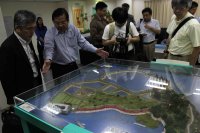
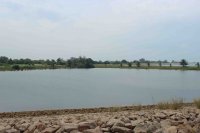
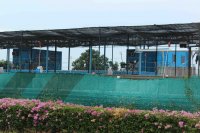
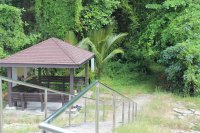
Singapore is one of the fastest growing countries worldwide and shows many aspects of modernization: more greenery in urban areas, high-rise buildings, amusement spots as well as fancy restaurants. The younger generations of Singaporeans embrace its international atmosphere while the older generations struggle to keep up with the rapid changes in society. Meanwhile, such rapid modernization raises big issue: the vast quantity of garbage produced by business and residency.
More... ![]()
The 1st Anniversary of the e-ASIA JRP!
28 June 2013 / Singapore

It has been one year since the e-ASIA Joint Research Program (e-ASIA JRP) was formally inaugurated on the 28th of June 2012, thanks to the enthusiasm of our members.
Happy 1st Anniversary!
Please check out the comments from JST president Dr. Nakamura on our website.
More... ![]()
A SATREPS project launched a new website
June 5, 2013 / Vietnam
One of experts for SATREPS project called "Development of Landslide Risk Assessment Technology along Transport Arteries in Viet Nam Reducing Landslide Disasters that Block Sustainable Development across the Country" sets up a new website, "Development of Landslide Risk Assessment Technology along Transportation Arteries in Viet Nam" Please go check out.
Water Reuse is needed? - It might bring a solution for tourist spots
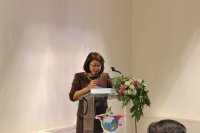
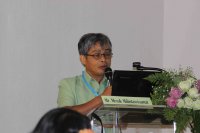
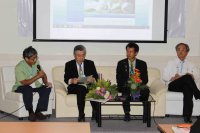
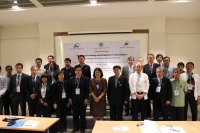
17 May 2013 @ Chang Mai, Thailand / @Asia Pacific Water Summit (APWS) in Chiang Mai, Thailand (May 14-20)
During the recent Asia Pacific Water Summit (APWS) in Chang Mai, Thailand (May 14 - 20), there were a number of workshops. I have already introduced one of them organized by IMPAC-T team called "Hydro-Meteorological Prediction and Adaptation to Climate Change in Thailand and Asia Pacific Countries" in my previous report. So at this time I introduce another workshop that I attended.
More... ![]()
The IMPAC-T team at water summit - Trying to bring a real impact on the summit
18 May 2013 @ Chang Mai, Thailand / Asia Pacific Water Summit (APWS) in Chiang Mai, Thailand (May 14-20)
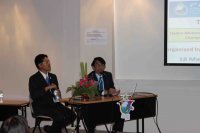
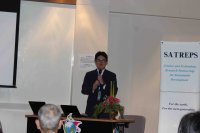
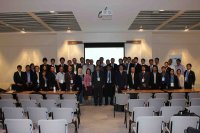
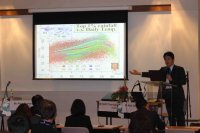
During the recent Asia Pacific Water Summit (APWS) in Chiang Mai, Thailand (May 14-20), there were a number of workshops which gave participants opportunities to hear from and ask question of experts on water resources and climate change.
More... ![]()
e-ASIA JRP "Disaster Prevention" Workshop
04 June 2013 / Jakarta, Indonesia
A workshop on "Disaster Prevention" will be held on the 4th of June in Jakarta, Indonesia.
The objectives of this workshop are to disseminate information on the e-ASIA Joint Research Program and to promote researcher interaction in the region.
Anyone who is interested in attending this workshop, please contact the Program Secretariat (e2kishid@jst.go.jp).
For more information, please visit www.the-easia.org/jrp/
e-ASIA JRP "3rd Quarter Activity Report"
15 April 2013 / Singapore
The 3rd Quarter Activity Report is now posted on our website.
Application deadline is re-extended to April 15th(Mon)! The e-ASIA JRP: Japanese-Vietnamese-Filipino Joint Call for Proposals in Infectious Diseases
05 April 2013 / Japan, Vietnam, the Philippines
Ministry of Science and Technology (MOST) of Vietnam, Department of Science and Technology (DOST) of the Philippines and Japan Science and Technology Agency (JST) invite researchers from their countries to submit joint proposals for cooperative research projects in the field of Infectious Diseases, concentrating on vaccine development, drug-resistance and epidemiology of the following prioritized diseases:
More... ![]()
If a mouse with a broken spine could walk, then why not human?
02 April 2013 @Singapore / Biopolis, Matrix
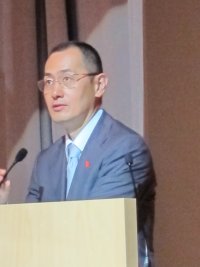
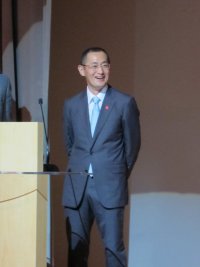
At 11:00 am, half an hour before today's guest speaker was due to give his speech, the auditorium at Matrix, Biopolis in Singapore was already half-filled with people. I have often come to listen to talks here but I have rarely seen this largest auditorium room at Matrix being so busy before a talk.
More... ![]()
<New Member> U.S. National Institute of Allergy and Infectious Diseases (NIAID) becomes a formal Member of the e-ASIA JRP.
01 April 2013 / Singapore

U.S. National Institute of Allergy and Infectious Diseases (NIAID) becomes a formal Member of the e-ASIA JRP.
With the Ministry of Health, Cambodia's new participation, it is expected that the collaboration in the field of "Infectious Diseases" will be enhanced.
More... ![]()